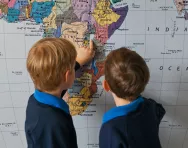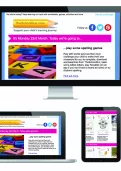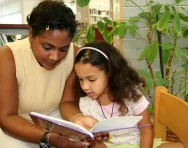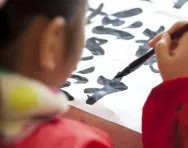Important update from TheSchoolRun
For the past 13 years, TheSchoolRun has been run by a small team of mums working from home, dedicated to providing quality educational resources to primary school parents. Unfortunately, rising supplier costs and falling revenue have made it impossible for us to continue operating, and we’ve had to make the difficult decision to close. The good news: We’ve arranged for another educational provider to take over many of our resources. These will be hosted on a new portal, where the content will be updated and expanded to support your child’s learning.
What this means for subscribers:
- Your subscription is still active, and for now, you can keep using the website as normal — just log in with your usual details to access all our articles and resources*.
- In a few months, all resources will move to the new portal. You’ll continue to have access there until your subscription ends. We’ll send you full details nearer the time.
- As a thank you for your support, we’ll also be sending you 16 primary school eBooks (worth £108.84) to download and keep.
A few changes to be aware of:
- The Learning Journey weekly email has ended, but your child’s plan will still be updated on your dashboard each Monday. Just log in to see the recommended worksheets.
- The 11+ weekly emails have now ended. We sent you all the remaining emails in the series at the end of March — please check your inbox (and spam folder) if you haven’t seen them. You can also follow the full programme here: 11+ Learning Journey.
If you have any questions, please contact us at [email protected]. Thank you for being part of our journey it’s been a privilege to support your family’s learning.
*If you need to reset your password, it will still work as usual. Please check your spam folder if the reset email doesn’t appear in your inbox.
Learning languages through culture

Learning a foreign language is now a compulsory part of the national curriculum for children in Key Stage 2, but it's not all about grammar and pronunciation. Primary-school language-learning places a big emphasis on learning about another culture, with children developing an appreciation of stories, songs, poems and rhymes in the foreign language.


Start a unique learning programme!
- Weekly programme for each school year
- Worksheets sent direct to your inbox
- Keeps your child's learning on track
The good news is that even if you don't speak a word of the language yourself, you can still give your child's learning a big boost by helping them to find out more about the country and its culture and customs.
Stories and rhymes
These are a popular way for children to get to grips with a new language, linking spoken and written words. At Star Bright Books you can find foreign language and dual language books in a wide range of languages, and many will show glimpses of everyday life in another country, while Mama Lisa's World has English and foreign language versions of nursery rhymes from other countries. Reading these regularly will help children begin to learn phrases and words off by heart and even adapt lines and rhymes as they learn more words and increase their confidence.
Music and song
From a cultural perspective, rhythm and music can be as enriching as words. There's lots of free foreign music online, and CDs and DVDs designed specifically for young children can work well too. Look out for local music events in your area, remembering to look further than the countries on your doorstep that speak the language. Don’t worry too much if you don’t understand the words of songs and are unable to find them written anywhere, as your child will still be absorbing the sounds and feeling immersed in the foreign culture.
Food
Pancakes, pizza or Italian ice cream always go down well, but again, look a little further for more unusual typical dishes in other countries where the language is spoken. Children will enjoy cooking sweet and savoury foreign recipes at home with you, perhaps practicing some food vocabulary. The Usborne Children’s World Cookbook has recipes from around the world, or for a special treat, take your family to a foreign café or restaurant in your area to sample typical dishes, recognise some words on the menu and maybe use a few phrases.
History and art
You don’t have to visit the country to soak up its history and art and broaden your child’s horizons about the people who speak the foreign language. Look out for short accessible TV programs, or books and websites focused on countries in which the language is spoken, perhaps featuring a famous artist such as Goya, or a monument such as the Eiffel Tower. Visiting museums and art galleries is another great way to teach your children about key people and events from a country's history.
Penfriends
Corresponding with a penfriend can be an exciting opportunity. Children can practise asking and answering basic questions, but try to keep this activity fun, without pushing for too much writing too early. Encourage creativity, sending and exchanging photos, recipes, postcards, stamps, and if the friendship blossoms, perhaps comics, CDs or DVDs, sweets and other typical food products. For safety, ask your child’s teacher for links, perhaps with a twinned school abroad, or ask friends and family for any contacts.
Sport
This is a healthy and accessible way to interest children in foreign language and culture and children from all backgrounds can often be inspired by sport. Major football tournaments and the Olympic Games are a good way to follow world teams, perhaps learn a few phrases and watch TV coverage about the host countries. Some children also enjoy following other foreign teams, particularly those for which famous British players are playing: Real Madrid is always popular!







